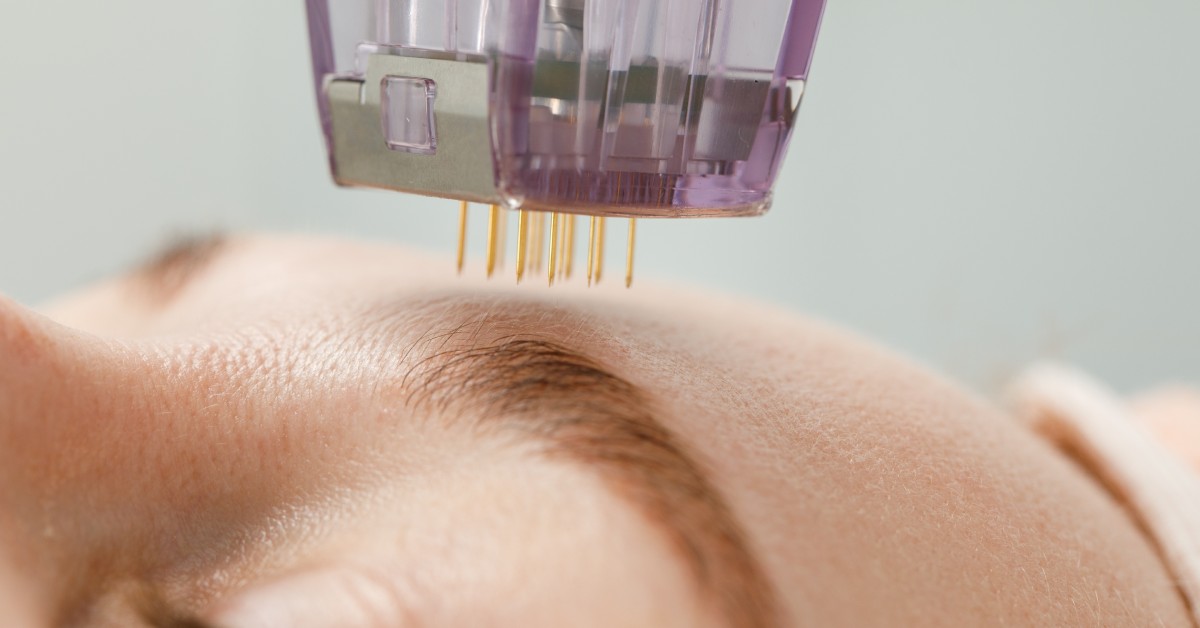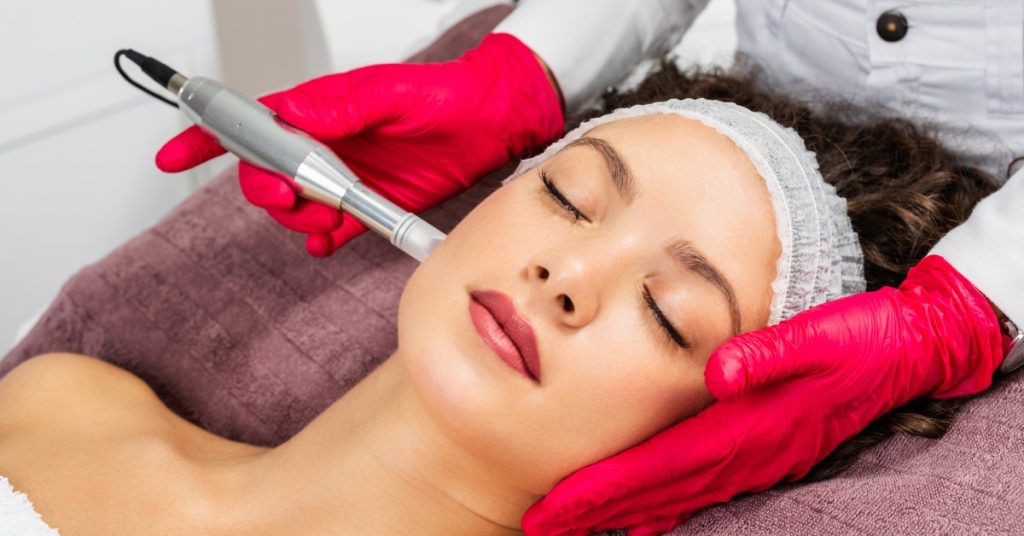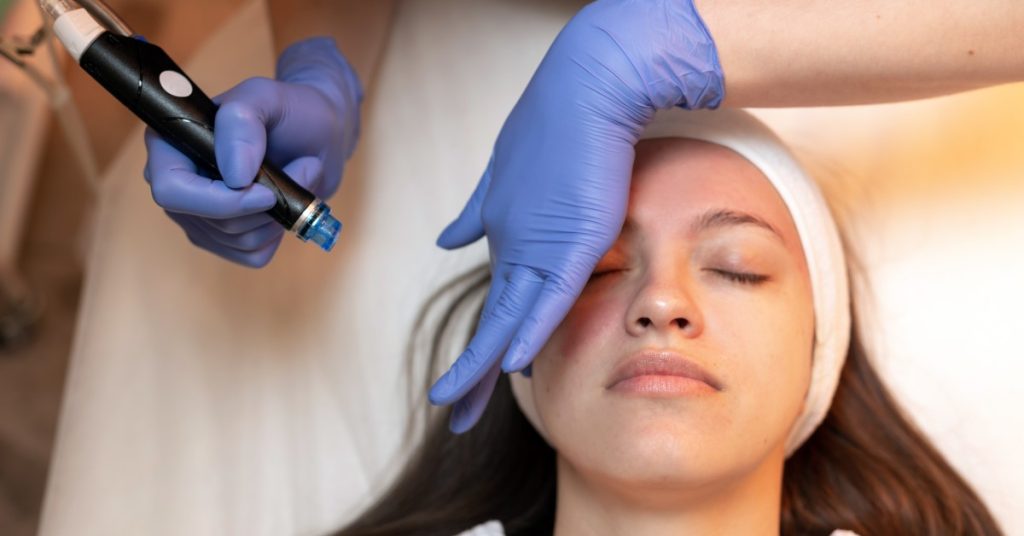
August 25, 2025; By Benjamin Kosubevsky
Aging is an inevitable process. It brings changes to the skin in the form of wrinkles, fine lines, and reduced elasticity. These changes prompt many people to seek antiaging treatments to rejuvenate their skin and restore its youthful appearance.
Two of the most popular options are microneedling and Botox. While both aim to combat signs of aging, they function in entirely different ways. Read on and learn if microneedling or Botox is better for aging to create a treatment plan.
Microneedling involves the use of tiny needles. Specialists use the needles to create controlled micro-injuries in the skin. The body has a natural healing process, and microneedling uses the process to its advantage. Since microneedling stimulates the body’s natural recovery response, people see a boost in collagen and elastin production, which are essential for skin firmness and elasticity. The result is smoother, firmer, and more youthful-looking skin.
A microneedling treatment is particularly effective for improving skin texture, evening out skin tone, and reducing the appearance of fine lines, scars, and enlarged pores. It’s a natural approach to antiaging because it relies on stimulating the skin’s own regenerative abilities rather than introducing external substances.
The treatment is minimally invasive, and it’s generally tolerated by most skin types. Sessions last between 30 minutes and one hour.
One of the advantages of microneedling is its versatility; specialists can apply the treatment to various parts of the body, not just the face. Additionally, mild redness and swelling subside within a day or two, resulting in minimal downtime for patients.

Botox, or botulinum toxin, is a neurotoxin protein derived from Clostridium botulinum. It works by temporarily relaxing the muscles responsible for causing dynamic wrinkles. Dynamic wrinkles are lines that form due to repeated facial movements, such as smiling, frowning, and squinting. By inhibiting the muscle activity, Botox smooths out these wrinkles, leaving the skin looking more relaxed and youthful.
Botox is especially effective for addressing crow’s feet, forehead lines, and frown lines between the eyebrows. The procedure is quick, often referred to as a “lunchtime” procedure because it takes 10 to 20 minutes and requires minimal downtime. Patients can see results within a few days, and the treatment lasts between three and six months. After this time period, maintenance injections are necessary to sustain the desired wrinkle-free appearance.
Unlike microneedling, Botox doesn’t address skin texture, tone, or scars. It is a targeted solution for dynamic wrinkles rather than a comprehensive skin rejuvenation treatment. The procedure is widely used and considered safe when administered by a qualified professional. Keep in mind that headaches, bruising, and muscle weakness are potential side effects of Botox treatments.
Effectiveness is a key factor when deciding on an anti-aging treatment, and each approach excels in different areas. Microneedling is best for addressing multiple signs of skin aging, including fine lines, uneven texture, and loss of elasticity. Its holistic approach makes it ideal for someone looking for overall skin rejuvenation. The results take time to emerge—as the skin needs to heal and rebuild collagen—but they are natural and long-lasting.
On the other hand, Botox provides near-instant results for reducing the appearance of dynamic wrinkles. It’s the treatment of choice for individuals whose primary concern is smoothing fine lines caused by facial expressions. However, it doesn’t improve overall skin texture or firmness, which limits its scope in addressing broader signs of aging.
Treatment longevity and required maintenance are important considerations. Microneedling typically requires a series of sessions (usually three to six) scheduled a few weeks apart to produce the best outcomes. The results can last for several months, sometimes up to a year, depending on individual skin type, age, and lifestyle factors.
Botox, while delivering quick results, is a temporary solution. The effects of Botox generally last between three and six months, meaning ongoing treatments are necessary to maintain the desired look. For someone seeking a low-maintenance option, the recurring nature of Botox treatments might be a drawback.
Both treatments are safe when performed by trained professionals, but they do carry potential risks and side effects. Microneedling can cause temporary redness, swelling, and minor skin irritation. Rarely, there may be a risk of infection if the patients don’t follow the proper aftercare procedures. It’s also crucial to avoid sun exposure post-treatment to prevent hyperpigmentation.
Botox, meanwhile, carries risks such as bruising at the injection site, headaches, and, in rare cases, drooping eyelids or uneven results. These side effects are typically mild and resolve on their own within a few days. However, individuals with certain medical conditions or allergies may not be suitable candidates for Botox.
Cost is another factor that differentiates the two treatments. Microneedling sessions generally cost less than Botox injections, but because multiple sessions are important for optimal results, the overall cost can add up. Botox, while more expensive upfront per session, delivers immediate results, which may justify the price for individuals seeking rapid improvement.
Both options are aesthetic treatments, which means they are not typically covered by insurance. Potential patients should plan their budget accordingly and consult with a reputable provider to discuss costs and payment plans.
Choosing between microneedling and Botox ultimately depends on your skin concerns, desired results, and lifestyle preferences. If you’re looking for a noninvasive approach to improve skin tone, texture, and overall appearance, microneedling could be the better option. It’s particularly suited for individuals who prefer gradual, natural results with the added benefit of collagen stimulation.
If your primary concern is reducing the appearance of dynamic wrinkles and you want a quick, targeted solution, Botox might be the ideal choice. It delivers fast, noticeable results and can be an excellent option for those with crow’s feet or forehead lines.
For many individuals, a combination of both treatments may offer the best solution. Botox can address dynamic wrinkles, while microneedling enhances overall skin quality. Consulting with a qualified skincare professional can help you develop a personalized treatment plan tailored to your unique needs.

There are advantages to both microneedling and Botox to combat the skin from aging. Understanding how the treatments work, what they address, and their limitations are vital to making an informed choice.
Whether you opt for one treatment over the other or decide to combine both, professional guidance and consistent sessions are key to achieving youthful, radiant skin. By carefully considering your goals and consulting a trusted provider, you can select the path that works for your individual skincare needs.